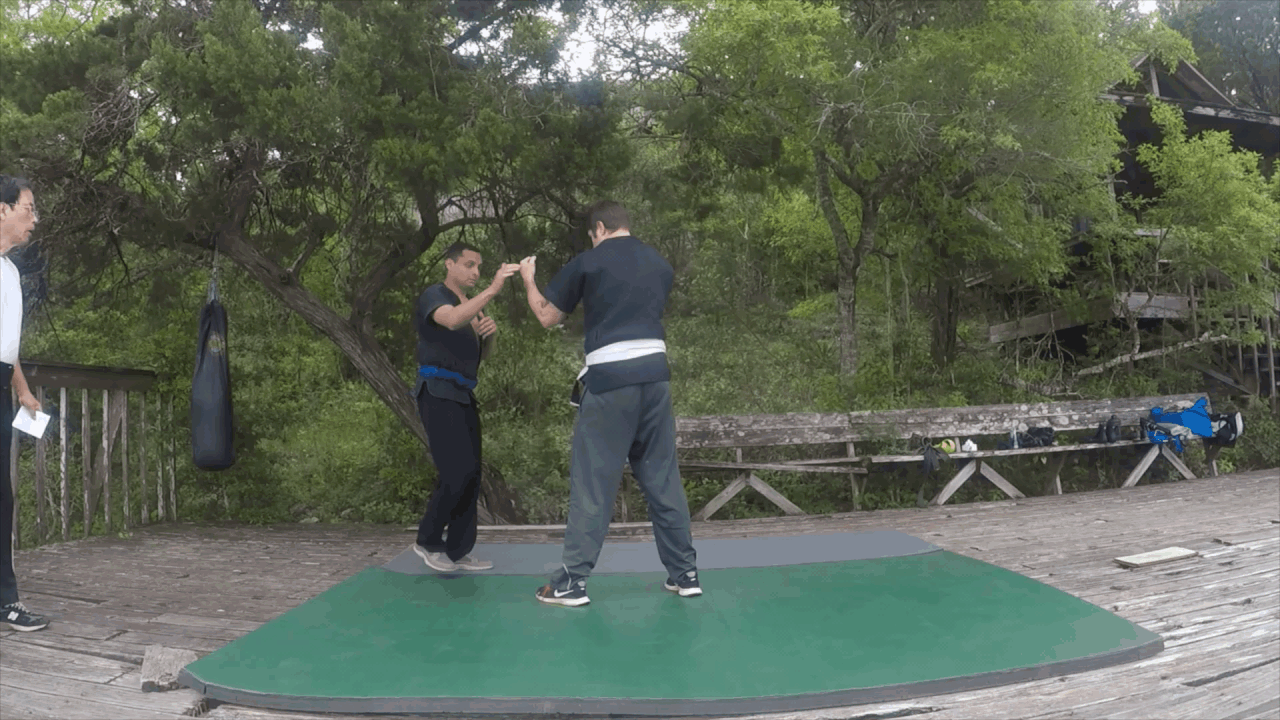D_Glenn wrote:Origami, there’s an older thread on here somewhere that talks about this: in Chen style there is a body quality that is created called Peng, which shares the same name as the 13 energies of Peng, etc.; but this Peng Quality is that elastic tendon force that you have just described. Having Peng is the key component in a TiFang. If a person doesn’t have Peng then they cannot possibly be able to do Ti Fang. It will just be a common throw and discernibly not a TiFang.
Xingyiquan and Baguazhang also develop Peng but TiFang is less of a factor in the tactics of the two styles. So it’s not talked about or demonstrated as much.
That is definitely in alignment with my understanding.
Stiff bracing gets broken or toppled, but the release of sung allows the force to be neutralized through turning as if on a ball, or through the deforming as mentioned above. The "base level" of tension that holds the body in a particular orientation is reduced to the least necessary amount to allow for maximum responsiveness. The adjustments get smaller and smaller.
I wish I could have captured this cardinal this morning, landing on an evergreen branch, dropping about a foot, then the branch caught the maximum amount of force from the initial drop and rebounded back up, settling to a point roughly halfway between the highest and lowest, then springing back again as the bird hopped to another branch. Perfect illustration of concept.
Phisogically and physics-ally, if we equate peng to elastic tendon force, then the expression of that force is F = E * d, where E is the "elastic strength" of the muscle-tendon system involved and d is the "distance" or amount of "deformation".
If we equate the discipline of Taijiquan roughly with "building a ball" that is the human body, then the "power of steel folded over and refined 1000 times" is the thickening of this ball's skin to increase the "elastic strength" and store/transmit more energy with less overt movement and less internal deformation. Punching a beach ball vs a tractor tire.
The Peng energy permeates all of the other energies, the difference is in how we use it and the specific quality we present to the incoming force. The other 7 energies describe those interactions, supporting, bouncing, disappearing, leading, pulling, dispersing, crushing, folding. The 5 control the use cases, and then the other myriad categorized jins control the character of the interaction, long and smooth, short and abrupt, the shaking, etc.
The key thing is that it's like one sheet across the whole body, it eats "Li" or straight muscular bone force because that arrangement relies on every part, every individual muscle group, being strong enough to deliver the entire amount of force. There is always something that is weaker. THIS arrangement utilizes the force available in each part altogether as if it were a single muscle. The strain of the applied force will travel to the weak spots/faults like cracks in glass.
It's so hard to really express what that means.
Itto wrote:
Sigh... nobody appreciates subtlety anymore, but small unbalancings keep people from getting frustrated or defensive where big fa jins can damage pride and cause escalations that interfere with training and that my skills can't handle frankly.
nice work

Thank you very much, I do appreciate that you see what I'm working towards here and your observations.












 trying to recover from it...
trying to recover from it...

